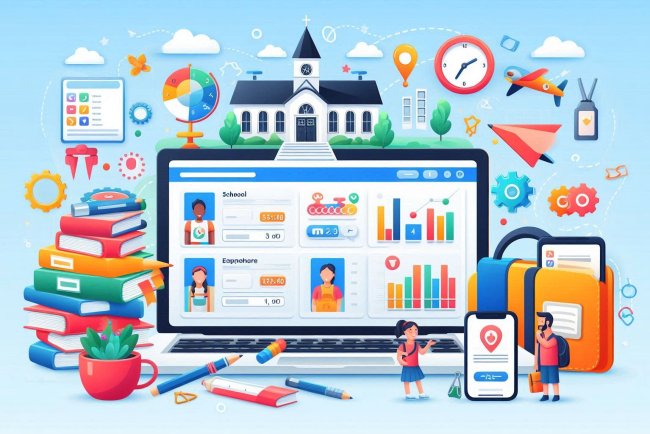School management software with curriculum management
Streamline curriculum management with our school management software. Organize lessons, assignments, and assessments efficiently for better student outcomes.

School Management Software with Curriculum Management
School management software with curriculum management is a comprehensive solution designed to streamline the administrative and academic processes within educational institutions. This software integrates various modules to automate tasks such as student enrollment, attendance tracking, grade management, and communication with parents. One of the key features of this software is curriculum management, which allows educators to create, organize, and track the curriculum for different courses.
Benefits of School Management Software with Curriculum Management
Implementing school management software with curriculum management offers several benefits for both educators and students:
- Efficient Curriculum Planning: The software provides tools for educators to design and organize the curriculum according to the specific requirements of each course. This streamlines the planning process and ensures that all learning objectives are met.
- Centralized Curriculum Repository: All curriculum documents, including lesson plans, assignments, and assessments, can be stored in a centralized location within the software. This makes it easy for educators to access and update curriculum materials as needed.
- Alignment with Standards: School management software with curriculum management allows educators to align their curriculum with educational standards and learning objectives. This ensures that the curriculum meets the necessary criteria for academic success.
- Real-Time Updates: Educators can make real-time updates to the curriculum, ensuring that students are always working with the most current materials. This flexibility allows for adjustments based on student performance and feedback.
- Enhanced Collaboration: The software facilitates collaboration among educators by allowing them to share curriculum resources, best practices, and feedback. This promotes a culture of continuous improvement in teaching and learning.
- Data-Driven Decision Making: By tracking student progress and performance against the curriculum, educators can make data-driven decisions to improve instructional strategies and student outcomes.
- Parent Engagement: School management software with curriculum management often includes features that allow parents to view curriculum materials, assignments, and grades. This promotes transparency and enhances parent engagement in their child's education.
Key Features of School Management Software with Curriculum Management
The following are some of the key features typically found in school management software with curriculum management:
- Curriculum Design Tools: Tools for creating and organizing curriculum documents, including lesson plans, assignments, and assessments.
- Curriculum Mapping: Mapping curriculum to standards and learning objectives to ensure alignment and coverage.
- Curriculum Version Control: Tracking changes to curriculum documents and maintaining a history of revisions.
- Assessment Management: Managing assessments, including creating, administering, and grading tests and assignments.
- Progress Tracking: Monitoring student progress against the curriculum and identifying areas for improvement.
- Parent Portal: Providing parents with access to curriculum materials, assignments, and grades to stay informed about their child's academic performance.
- Reporting and Analytics: Generating reports on curriculum coverage, student performance, and other key metrics to inform decision making.
- Integration with Learning Management Systems: Integrating with learning management systems to provide a seamless experience for educators and students.
Implementation Considerations
When implementing school management software with curriculum management, educational institutions should consider the following factors:
- Training and Support: Providing adequate training and support for educators to effectively use the software and maximize its benefits.
- Data Security: Ensuring that student data and curriculum materials are secure and protected from unauthorized access.
- Customization: Customizing the software to meet the specific needs and requirements of the institution, including curriculum templates and reporting formats.
- Scalability: Choosing a software solution that can scale with the institution's growth and adapt to changing needs over
- Create Free Account
https://schoolerp.softwarelinkers.in/School/create-new-account
What's Your Reaction?

















